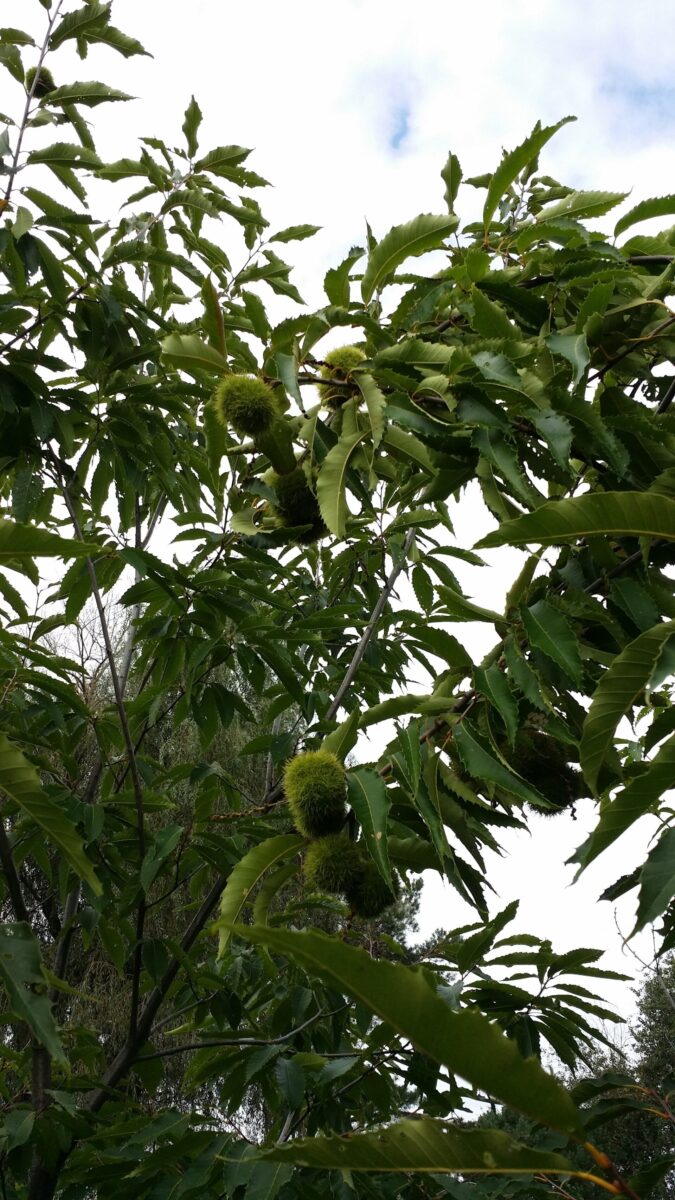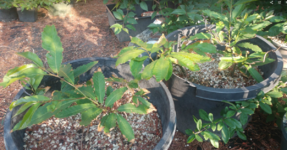The American chestnut is Castanea dentata, the European chestnut is Castanea sativa, distinctly different species.
Both species are susceptible to Chestnut Blight
Cryphonectria parasitica There is no effective chemical control that will work on large landscape trees.
@Wires_Guy_wires is located in Netherlands, EU, which has a strain of chestnut blight that has been infected with a dsRNA mycovirus,
Cryphonectria hypovirus. This virus causes the Cryphonectria parasitica fungus to be hypovirulent - weakens the fungus. So in Europe the chestnut trees have come back in many areas because their local race of chestnut blight have been altered to hypovirulence by the virus. It might indeed be possible to control the weakened blight with chemicals. There is a commercial chestnut orchard industry in Europe, the weakened blight makes this possible.
In the United States and Canada, there are several strains of Chestnut Blight. Only one or two strains are susceptible to the hypovirulence virus. The other strains are immune to the virus. This means in North America, the more pathogenic forms of blight are still common. There are alternate tree hosts for the blight that survive the blight with little or no damage, so it is a plague that will not disappear from an area once the chestnuts are gone.
There are several tactics to try to help the American chestnut to recover.
Hypovirulence - there is an effort to engineer a strain of the dsRNA mycovirus to attack all strains of the
Cryphonectria fungus. This is one GMO cure - weaken the fungus.
Another cure is to create transgenic American chestnuts. There are a small number of trees that are 99.9% American chestnut genetics but have a small amount of genes from rye grass which confers immunity to the fungus. This means that chestnuts harvested from these trees for sale as a culinary nut crop would have to be labelled as a GMO product.
There is a hybridization effort bringing immunity from Chinese chestnut species into the American chestnut. Right now I believe there are hybrids around that are 87.5% American Chestnut genes, and showing fair immunity to the blight. Unfortunately, these are hybrids, and do not exhibit 100% the traits of the American Chestnut. THe traits are flavor of the American Chestnuts is unique and by many deemed superior to CHinese and European chestnuts. The growth pattern of the American chestnut is a very large, upright tree, potentially maturing out at heights above 200 feet tall. The other chestnut species seldom top 75 feet. The wood quality for lumber, & cabinetry of the American chestnut is different than the European and Chinese species. Again, many feel it is superior. Except for one antique table I saw, I have no clue as I have never seen real American chestnut wood, or tree or tasted any nuts.
Hybrid nuts are noticeably sweeter than European chestnuts flavor wise.
The last approach is the approach so far showing the least success. Line breeding 100% pure American chestnuts to develop and select for blight resistance. Programs in their F3 and F4 generations are not showing large increases in resistance. Some limited increase in resistance but not large increase.
Probably the most hopeful is some combination of all of the above approaches.
Oh, you asked about bonsai.
I had some chestnut hybrid seedlings, about 50:50 Chinese-American. They are fast coarse growing trees. Think of a tree that superficially looks like a beech. With vigorous long shoots. Long internodes. Mine got browed by rabbits their second year, so I can not tell you more.
My guess would be that if you do develop blight, you can treat with a copper based fungicide or check with loca Ag Extension Service if there is a new fungicide for blight.





